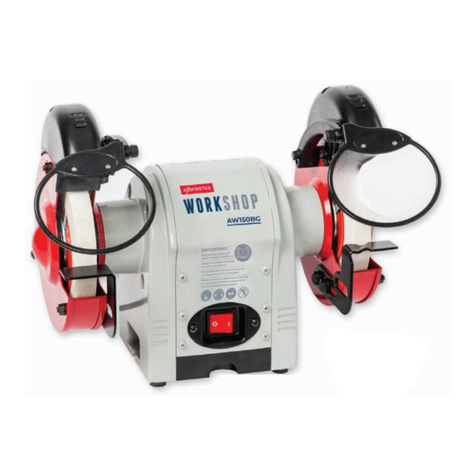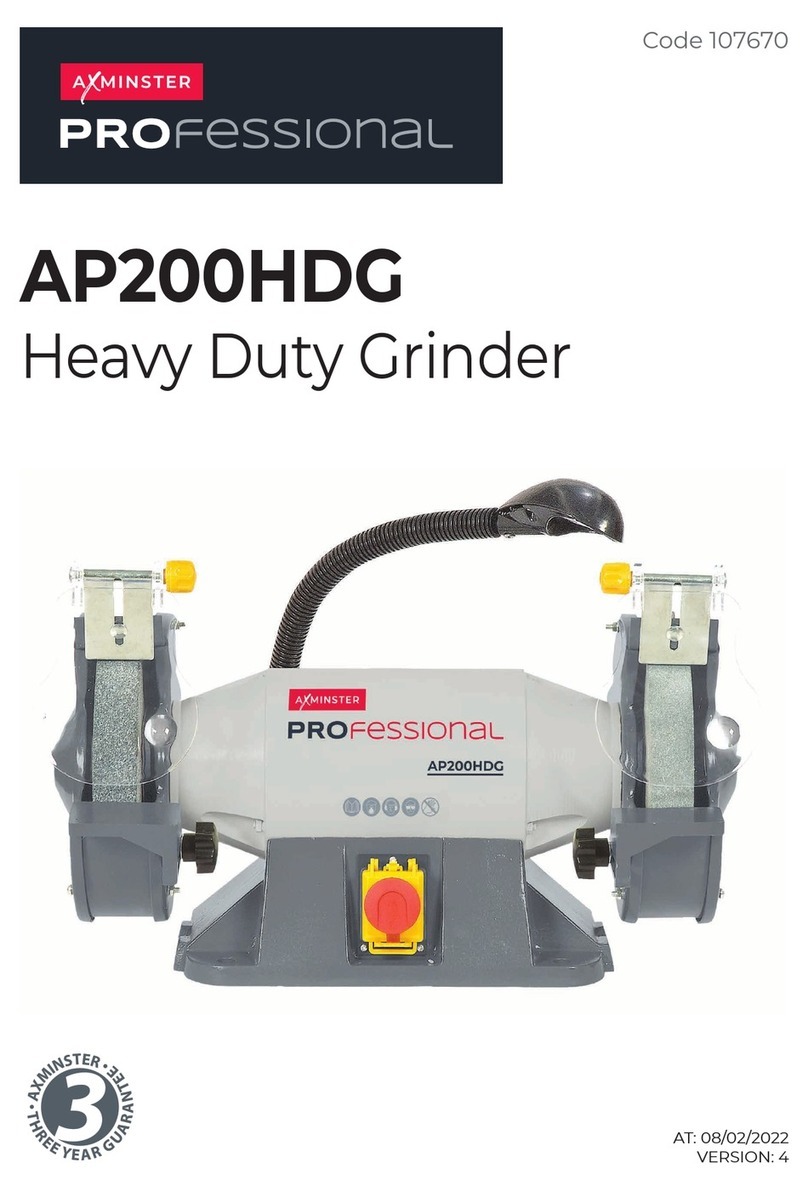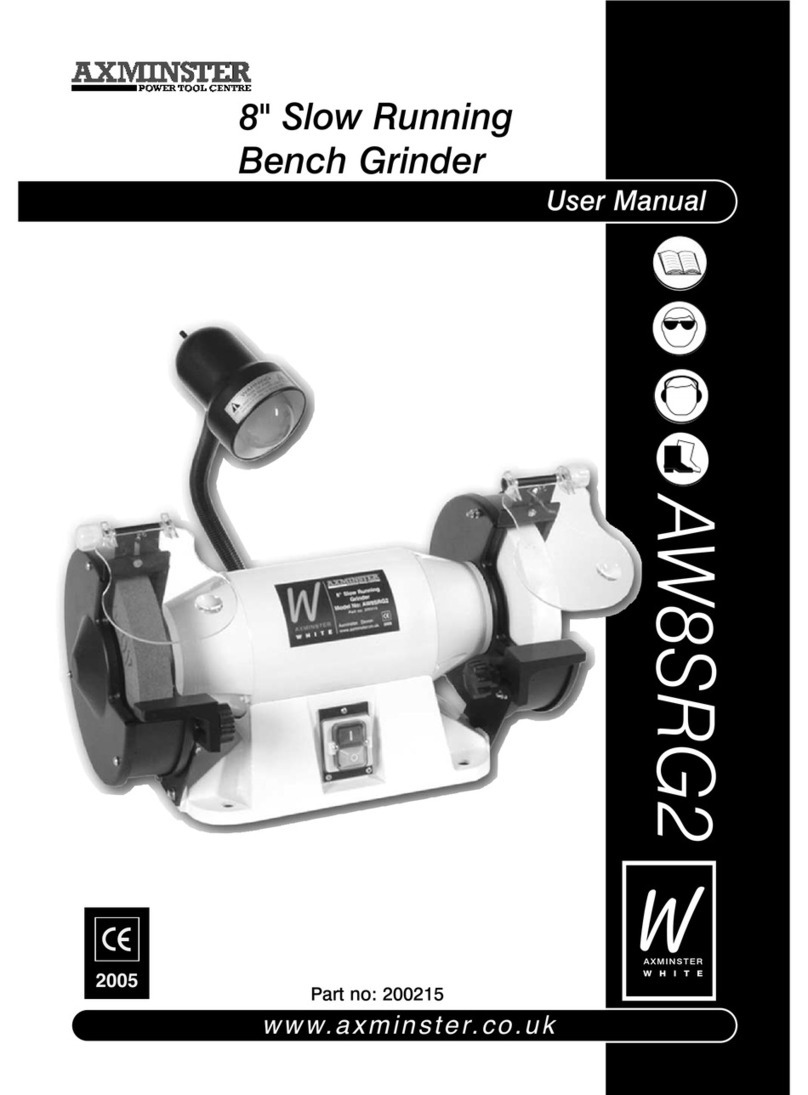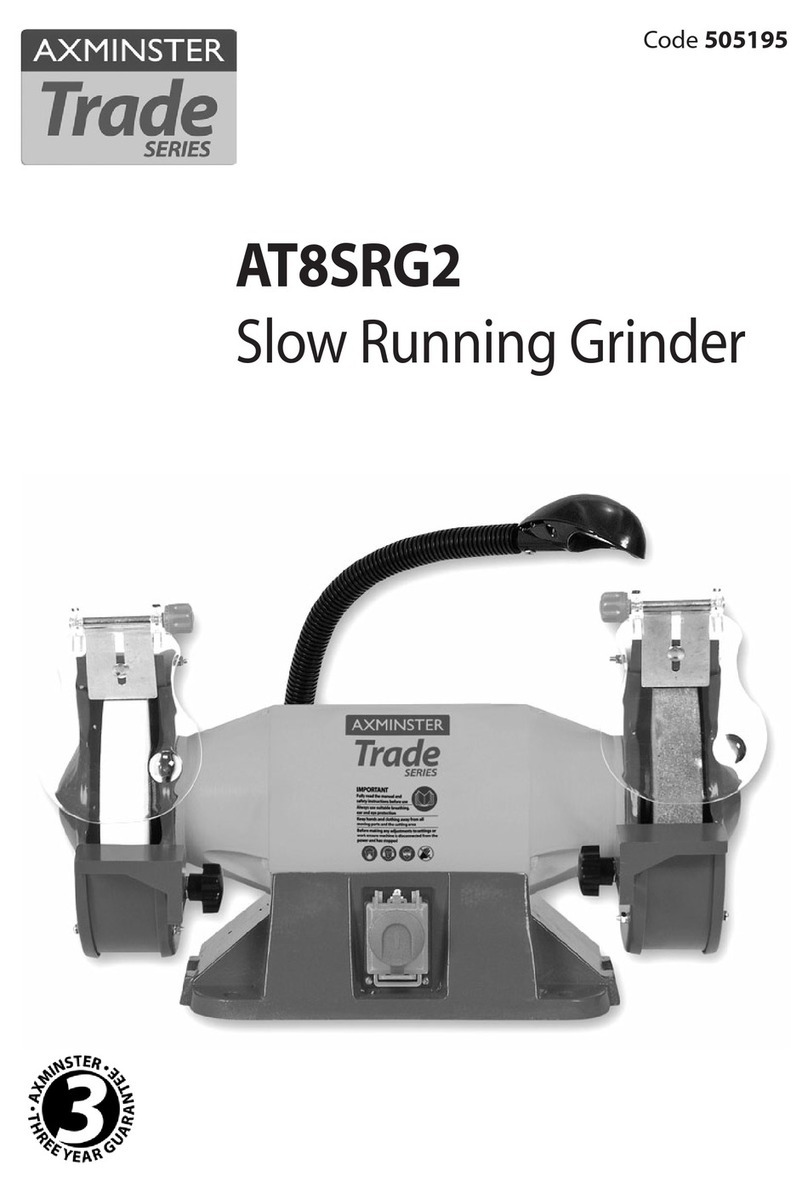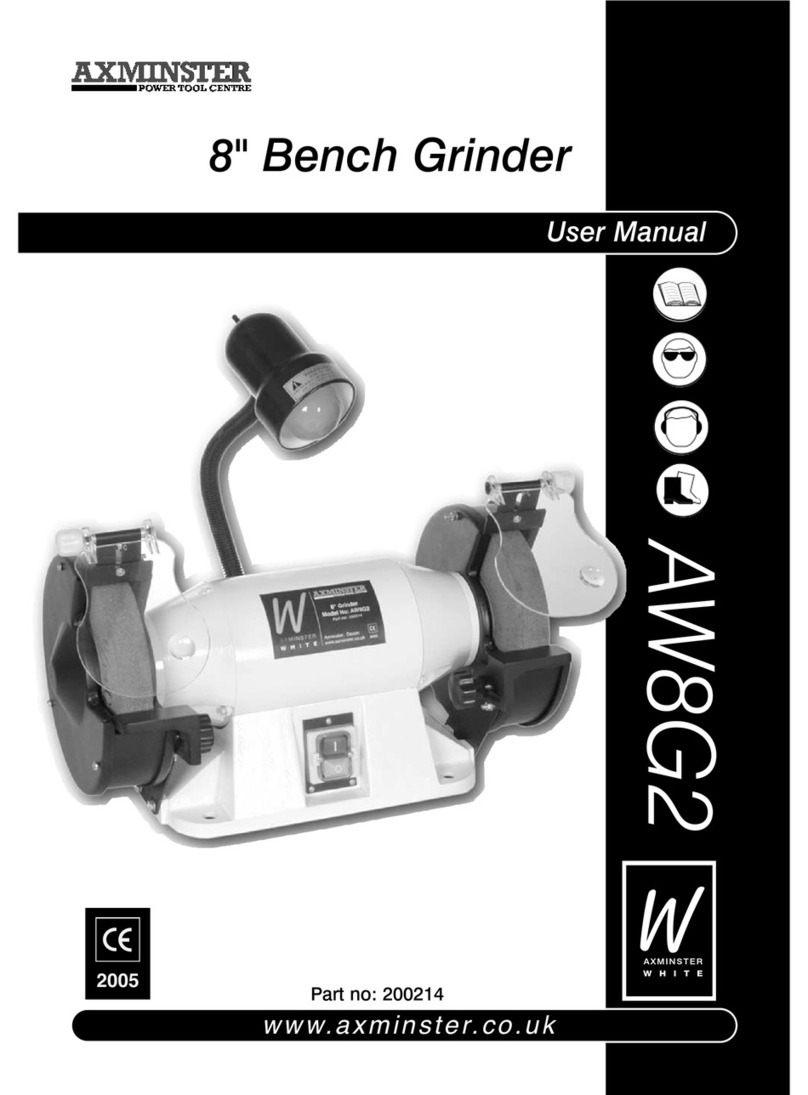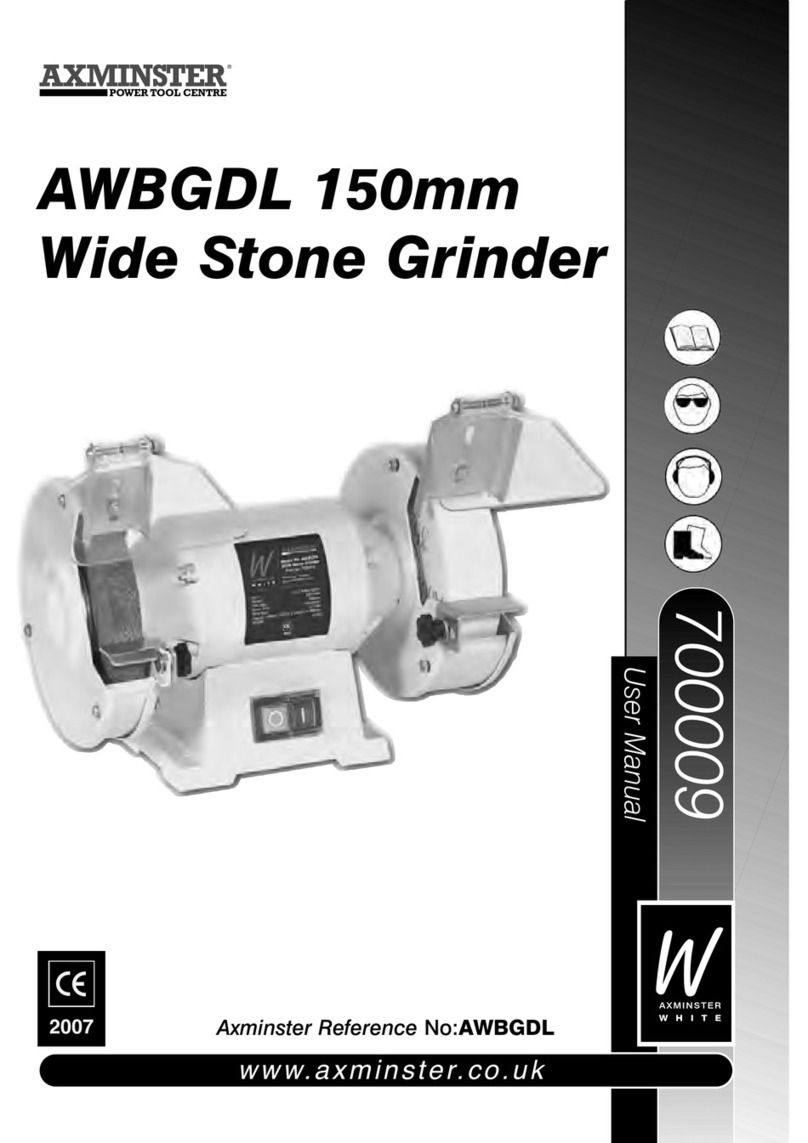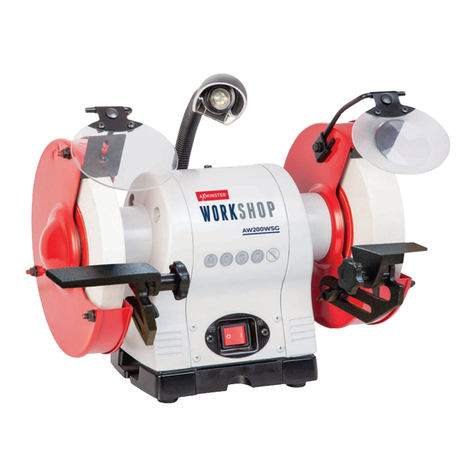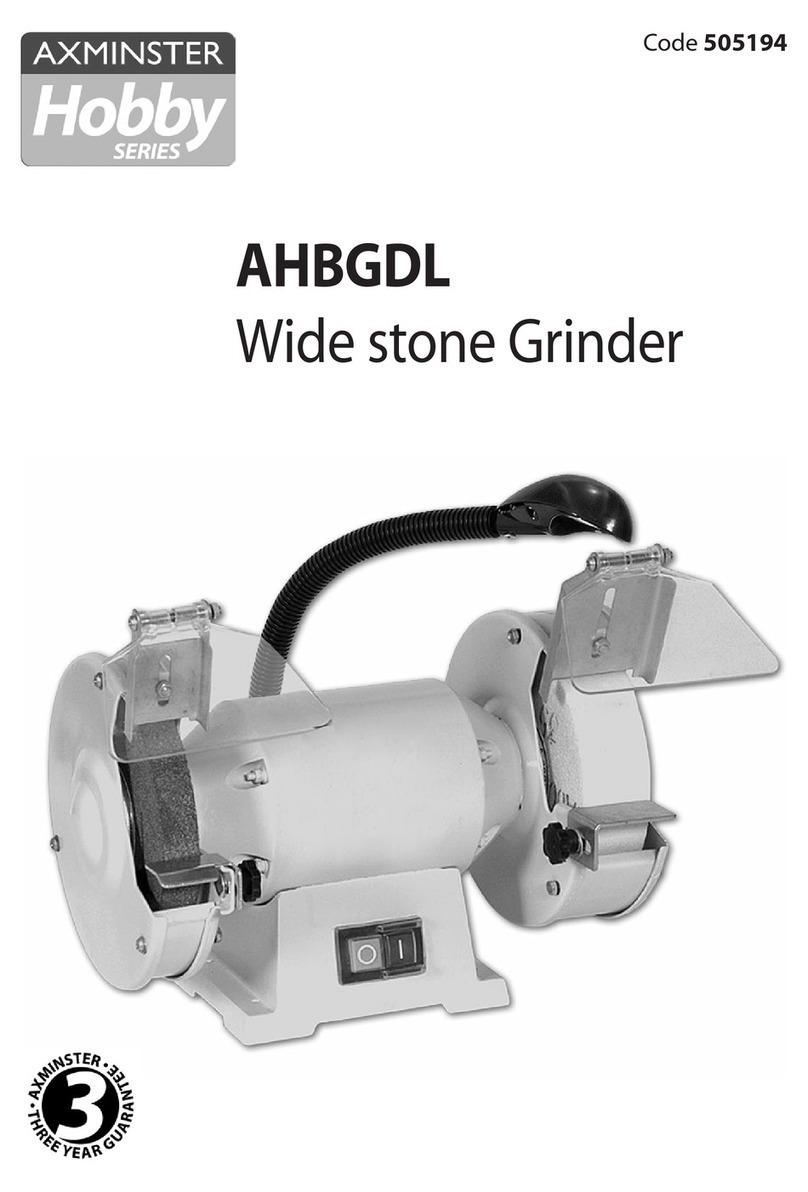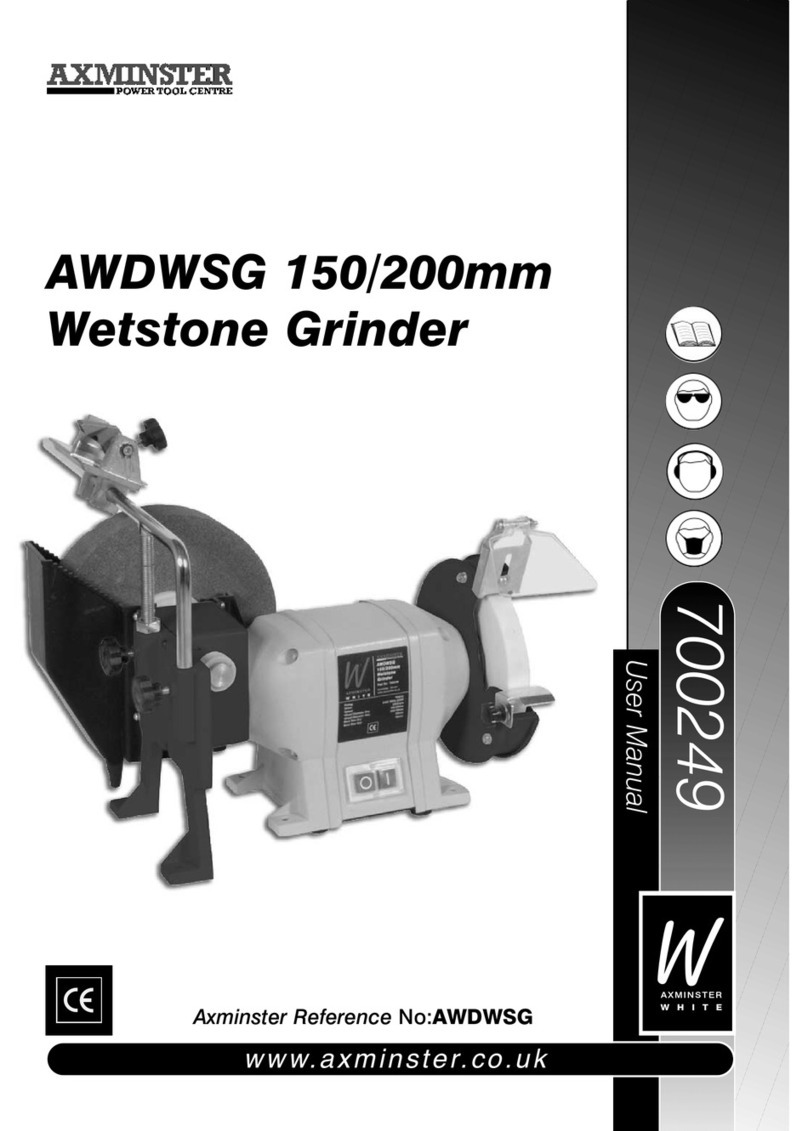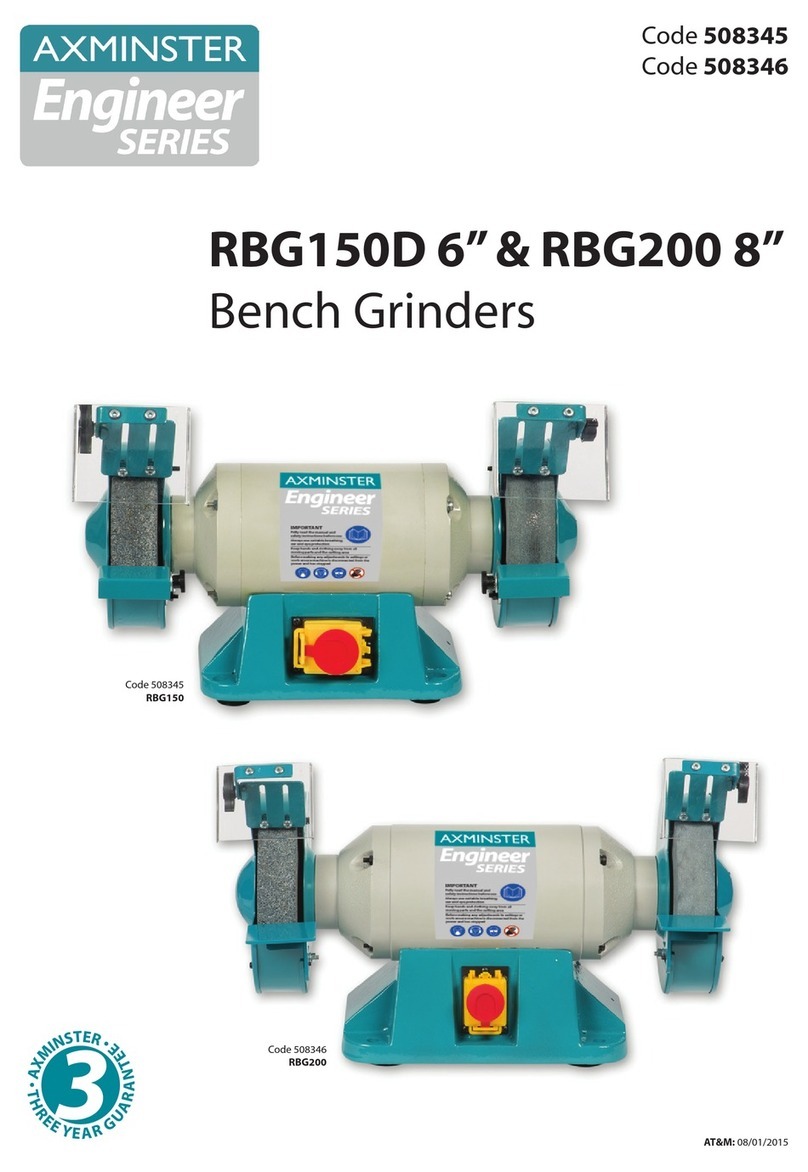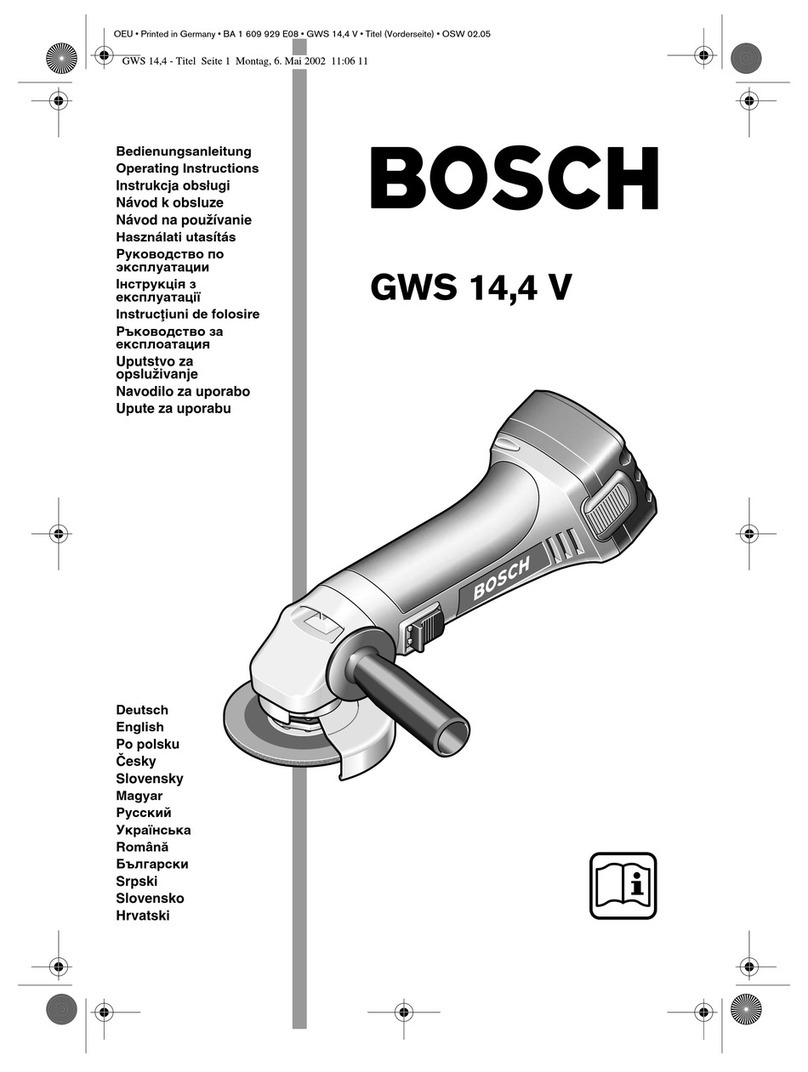
05
GENERAL INSTRUCTIONS FOR 230V MACHINES
Work Place/Environment
The machine is designed for indoor use, do not use when or where it is liable to get wet. If the tool is to be
used outside and it starts to rain (unusual though this would be in U.K.), stop work and move it inside. If
tool has got wet; dry it off as soon as possible, with a cloth or paper towel. Do not use 230Va.c. powered
tools anywhere within a site area that is flooded or puddled, and do not trail extension cables across wet
areas. Keep the tools clean; it will enable you to more easily see any damage that may have occurred.
Clean the tool with a damp soapy cloth if needs be, do not use any solvents or cleaners, as these may
cause damage to any plastic parts or to the electrical components.
Keep the work area as uncluttered as is practical, this includes personnel as well as material.
Under no circumstances should CHILDREN be allowed in work areas.
It is good practice to leave the tool unplugged until work is about to commence, also make sure to unplug
the tool when it is not in use, or unattended. Always disconnect by pulling on the plug body and not the
cable. Once you are ready to commence work, remove any tools used in the setting operations (if any) and
place safely out of the way. Re-connect the tool.
Carry out a final check e.g. check the cutting tool, drill bit etc., is securely tightened in the tool, check you
have the correct speed and function set, check that the power cable will not ‘snag’ etc. Make sure you are
comfortable before you start work, balanced, not reaching etc.
If the work you are carrying out is liable to generate flying grit, dust or chips, wear the appropriate safety
clothing, goggles, gloves, masks etc. If the work operation appears to be excessively noisy, wear
ear-defenders. If you wear your hair in a long style, wearing a cap, safety helmet, hairnet, even a
sweatband, will minimise the possibility of your hair being caught up in the rotating parts of the tool,
likewise, consideration should be given to the removal of rings and wristwatches, if these are liable to
be a ‘snag’ hazard. Consideration should also be given to non-slip footwear, etc.
If you are allowing another person to use the machine, ensure that they are suitably qualified to use it.
DO NOT use any tools or machinery if you are under the influence of drink, drugs or prescribed medication.
DO NOT work with cutting or boring tools of any description if you are tired, your attention is wandering or
you are being subjected to distraction. A deep cut, a lost fingertip or worse is not worth it!
DO NOT use this machine within the designated safety areas of flammable liquid stores or in areas where
there may be volatile gases. There are very expensive, very specialised machines for working in these areas,
THIS IS NOT ONE OF THEM.
Check that cutters, drills etc., are the correct type and size, are undamaged and are kept clean and
sharp, this will maintain their operating performance and lessen the loading on the machine. Above all,
OBSERVE…. make sure you know what is happening around you, and USE YOUR COMMON SENSE.
